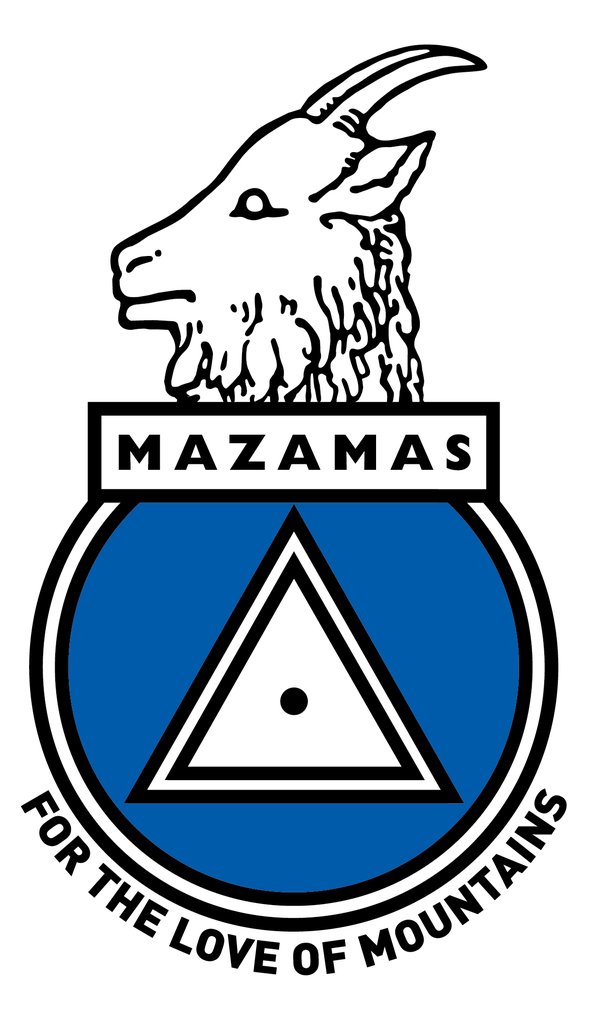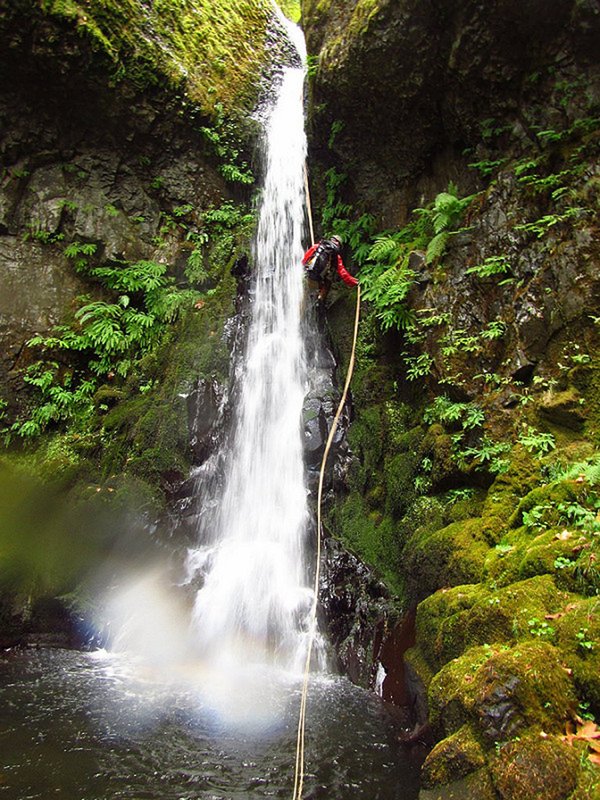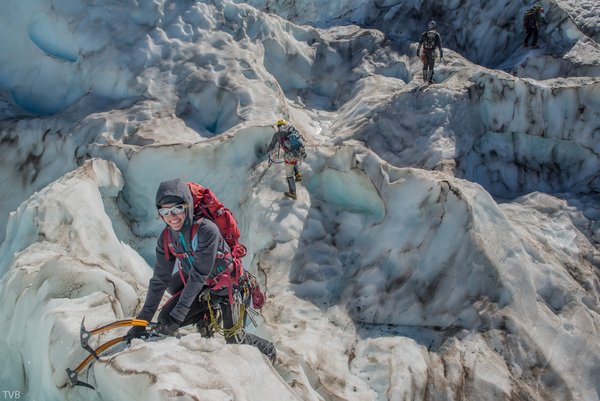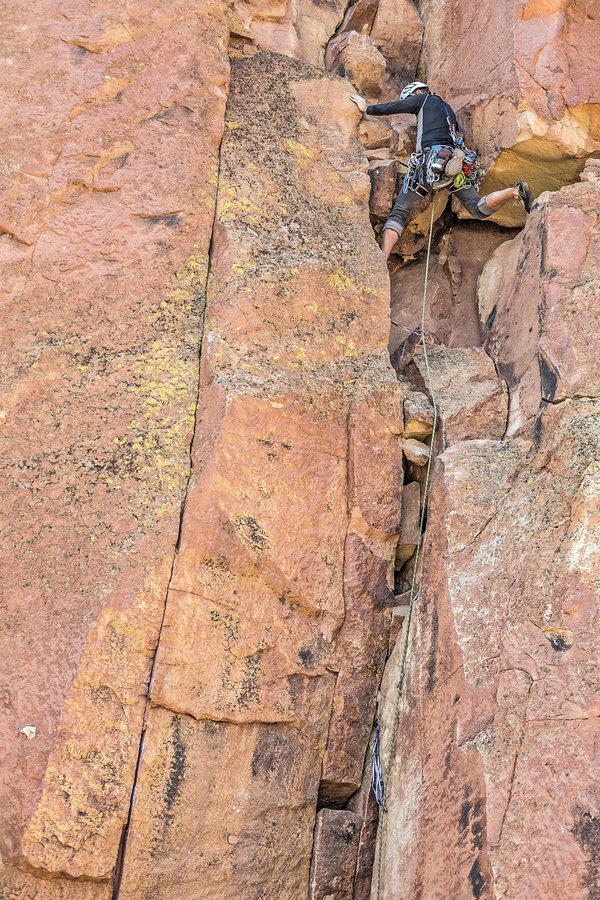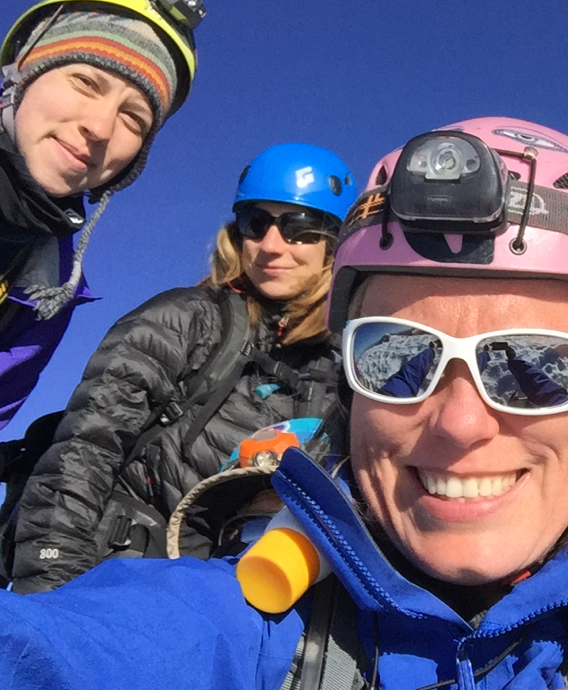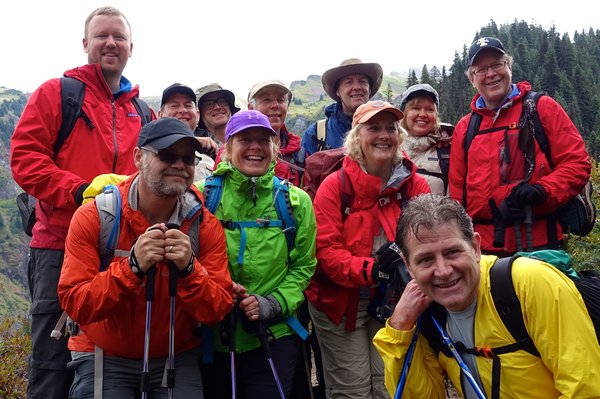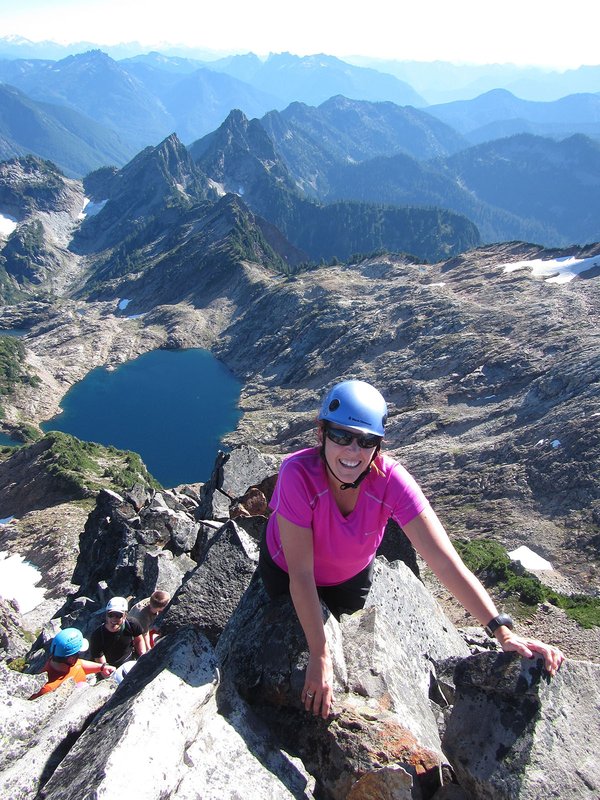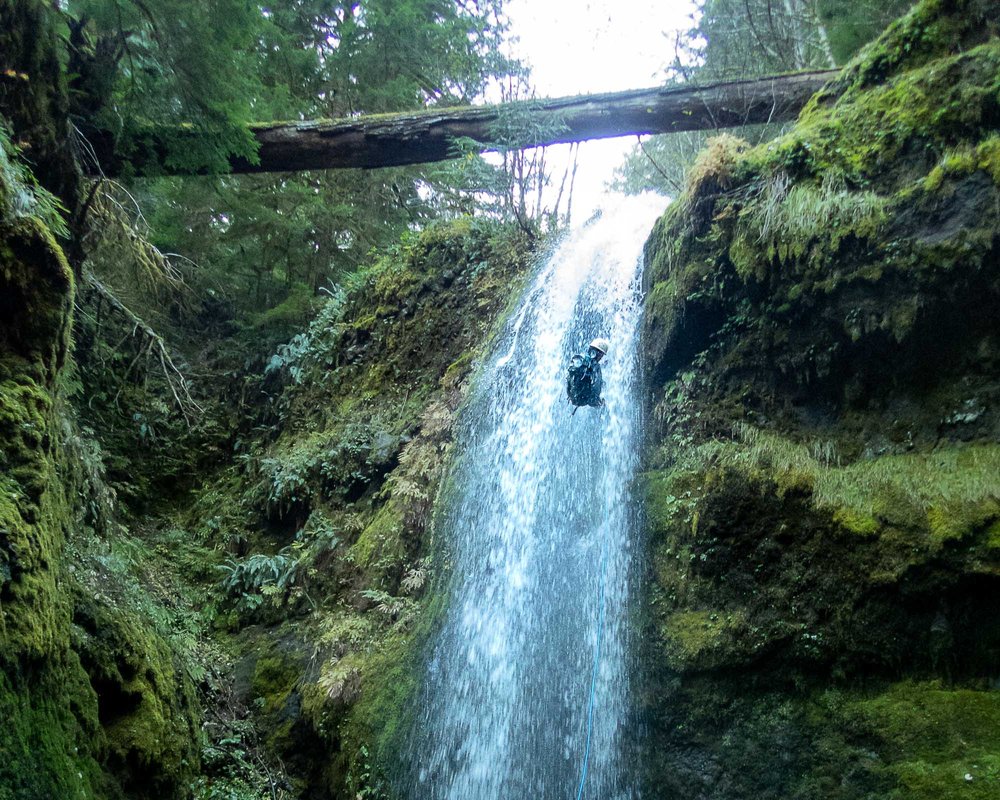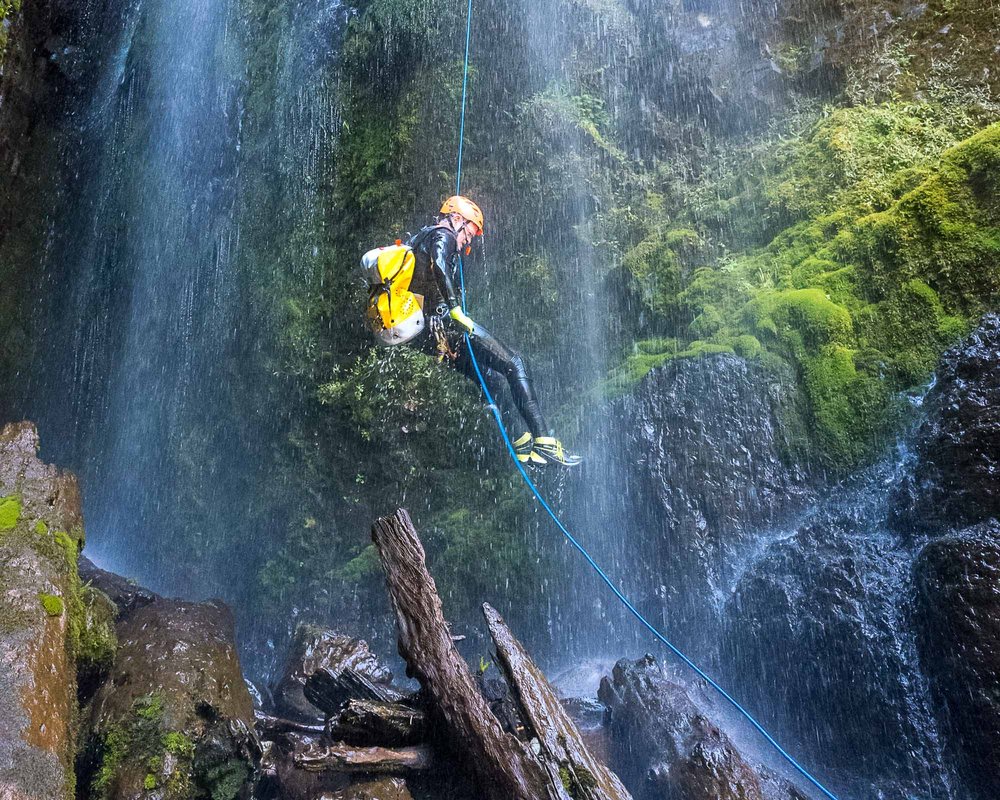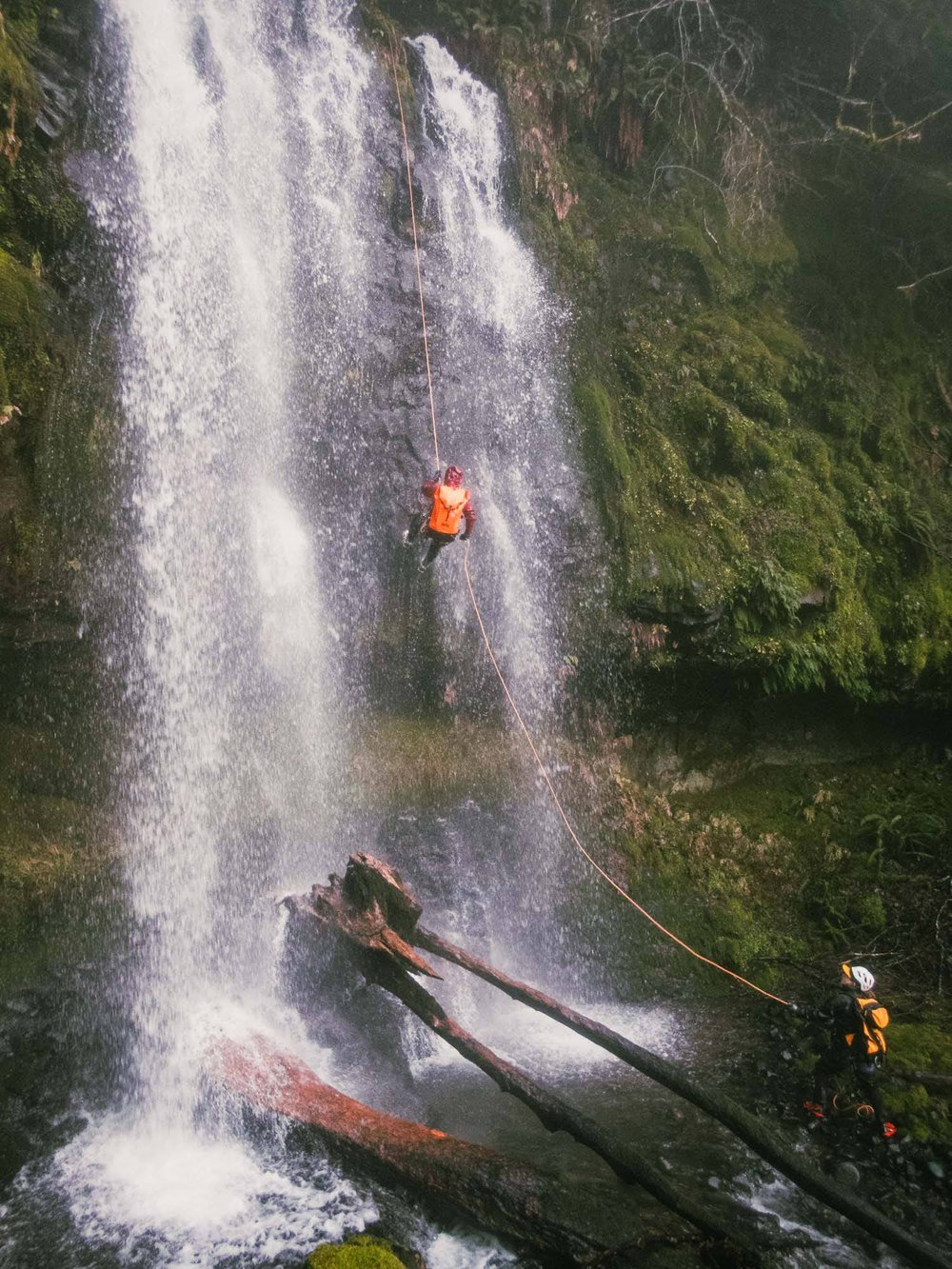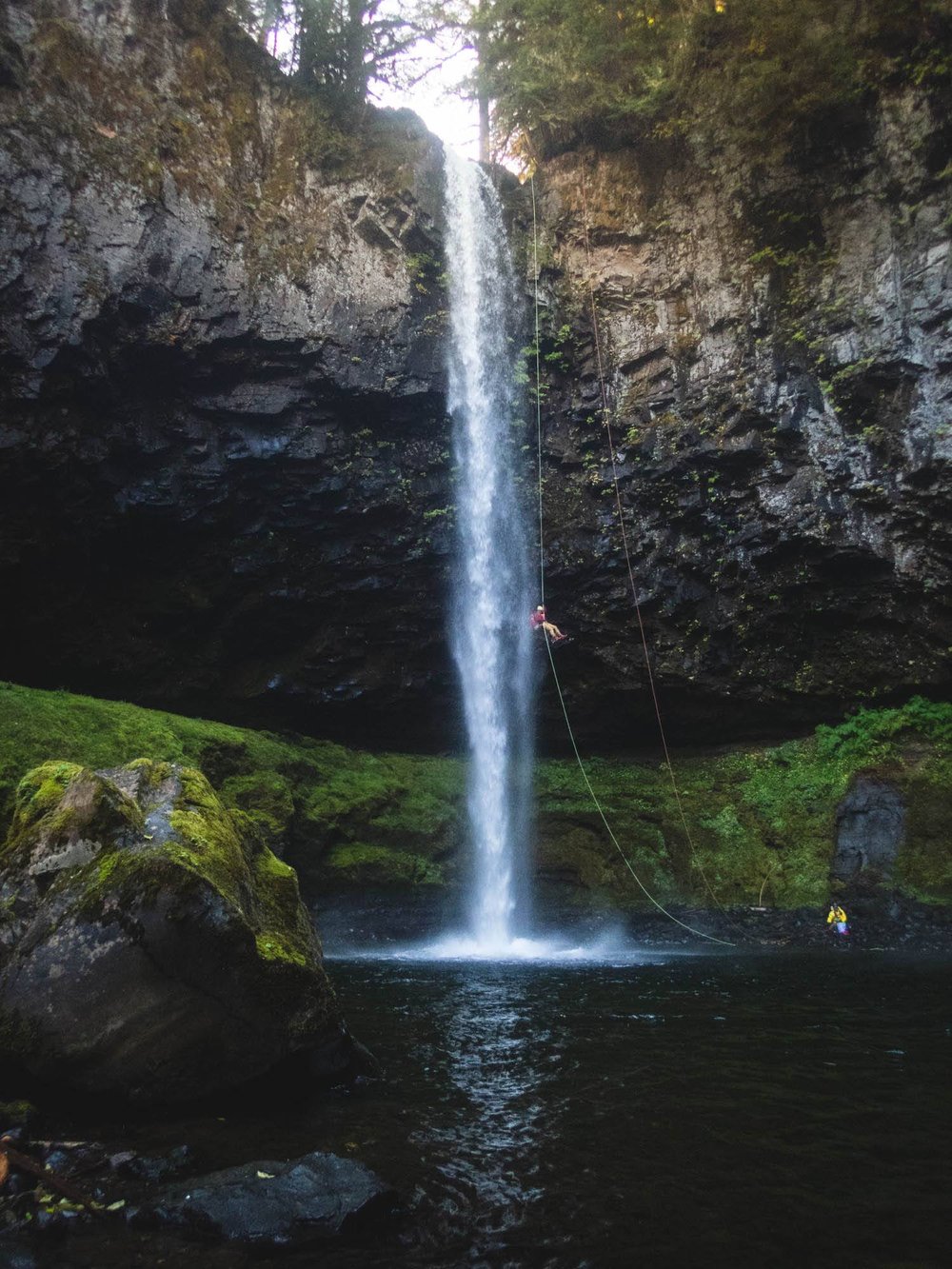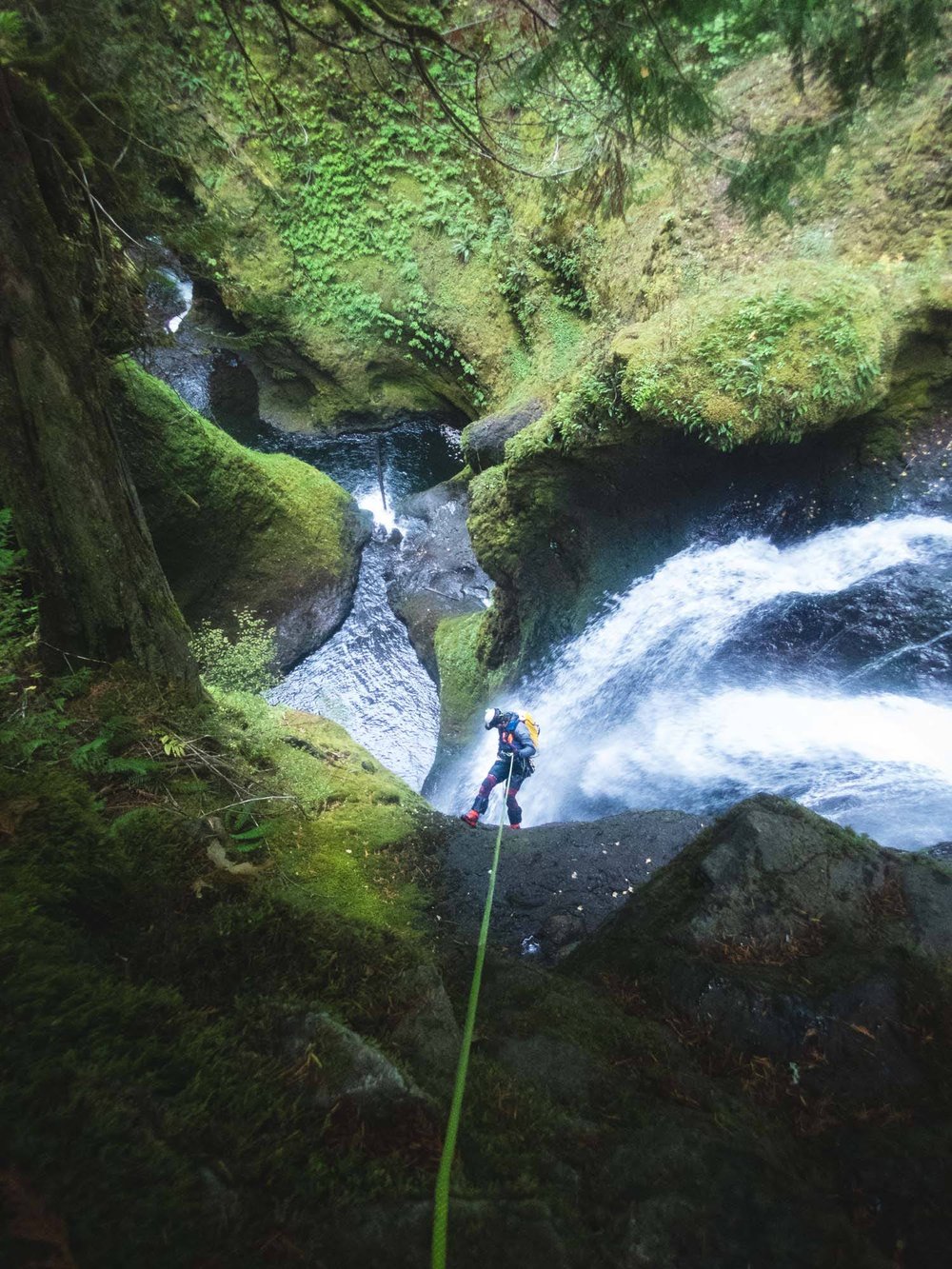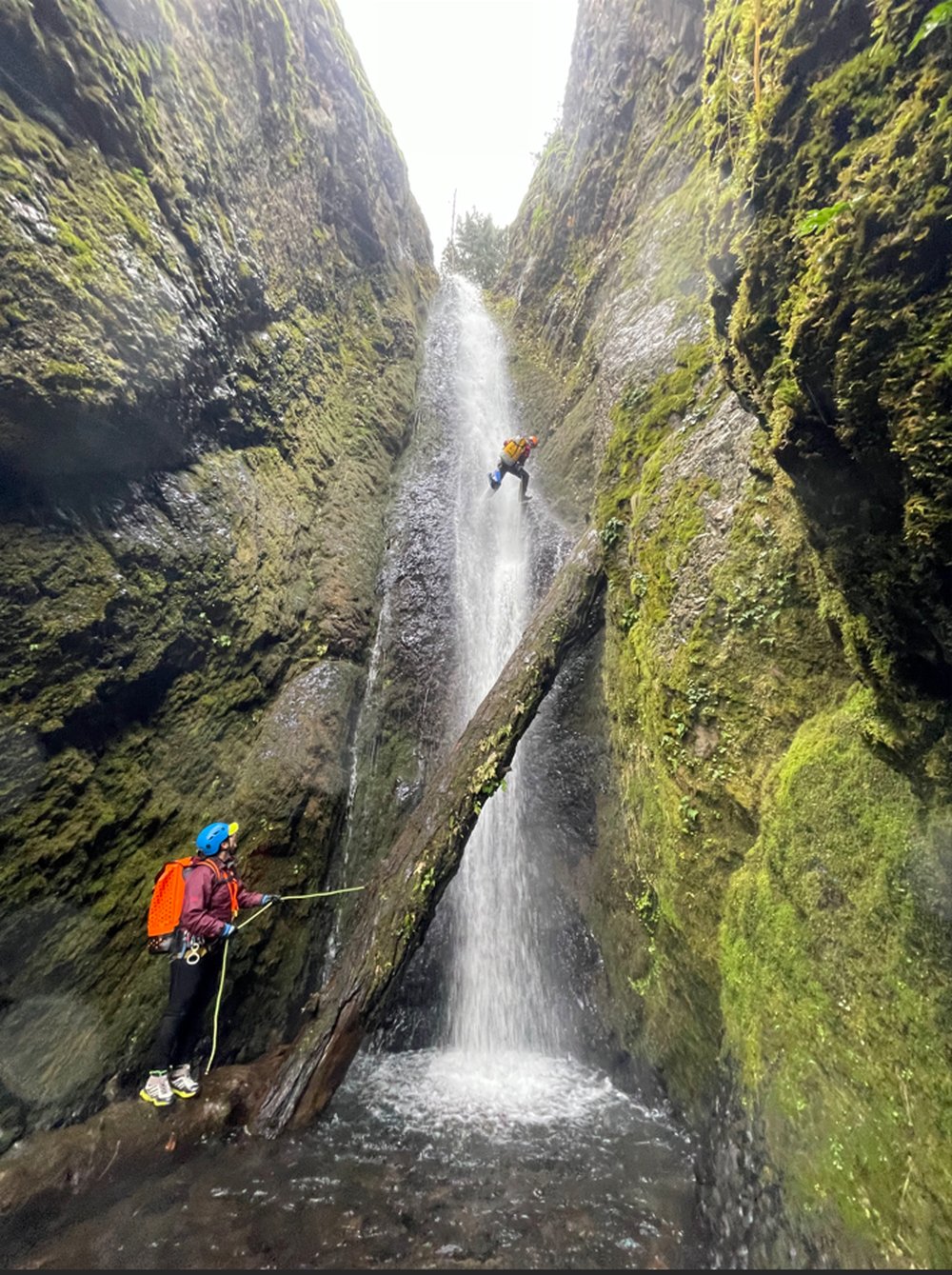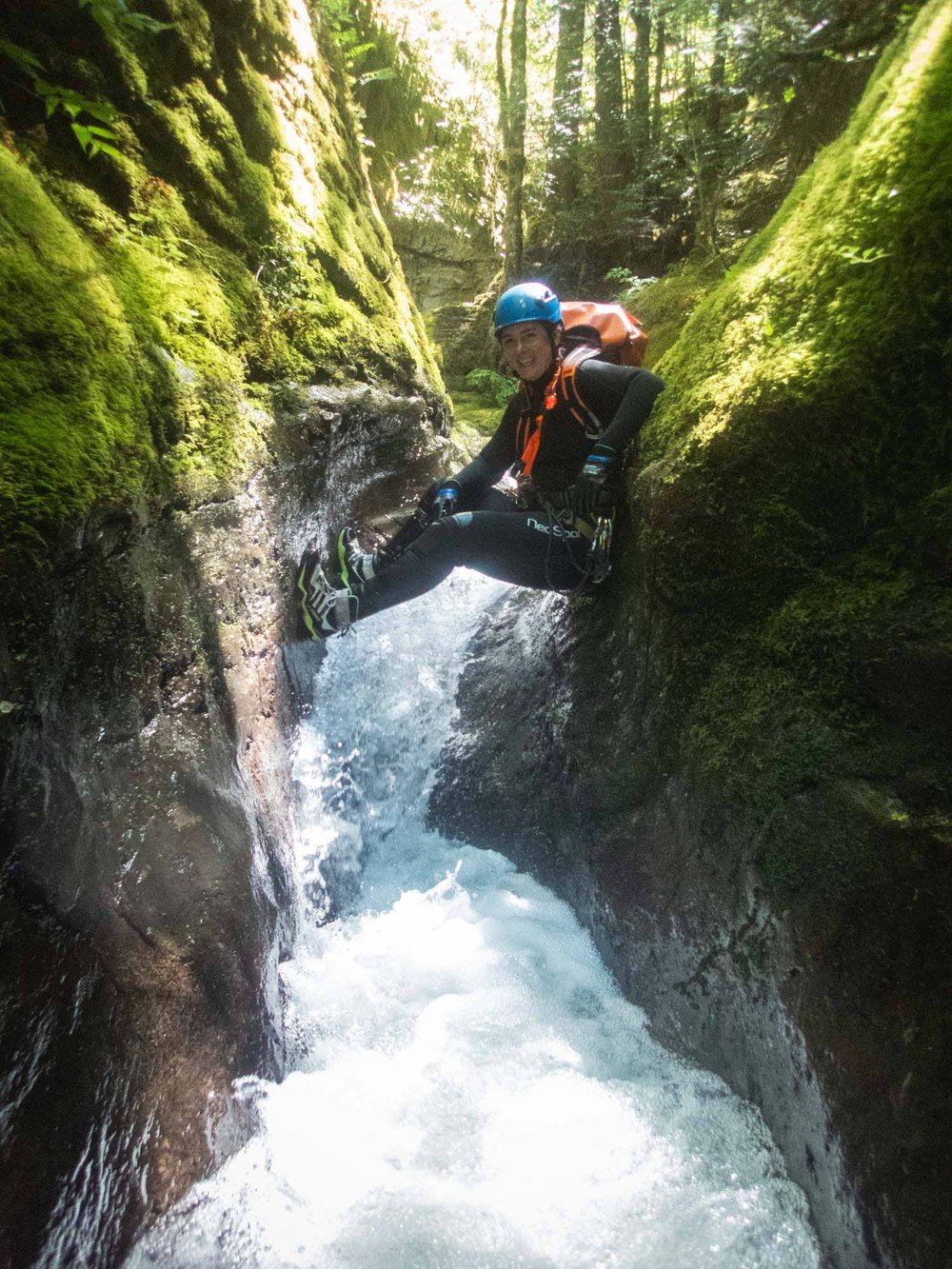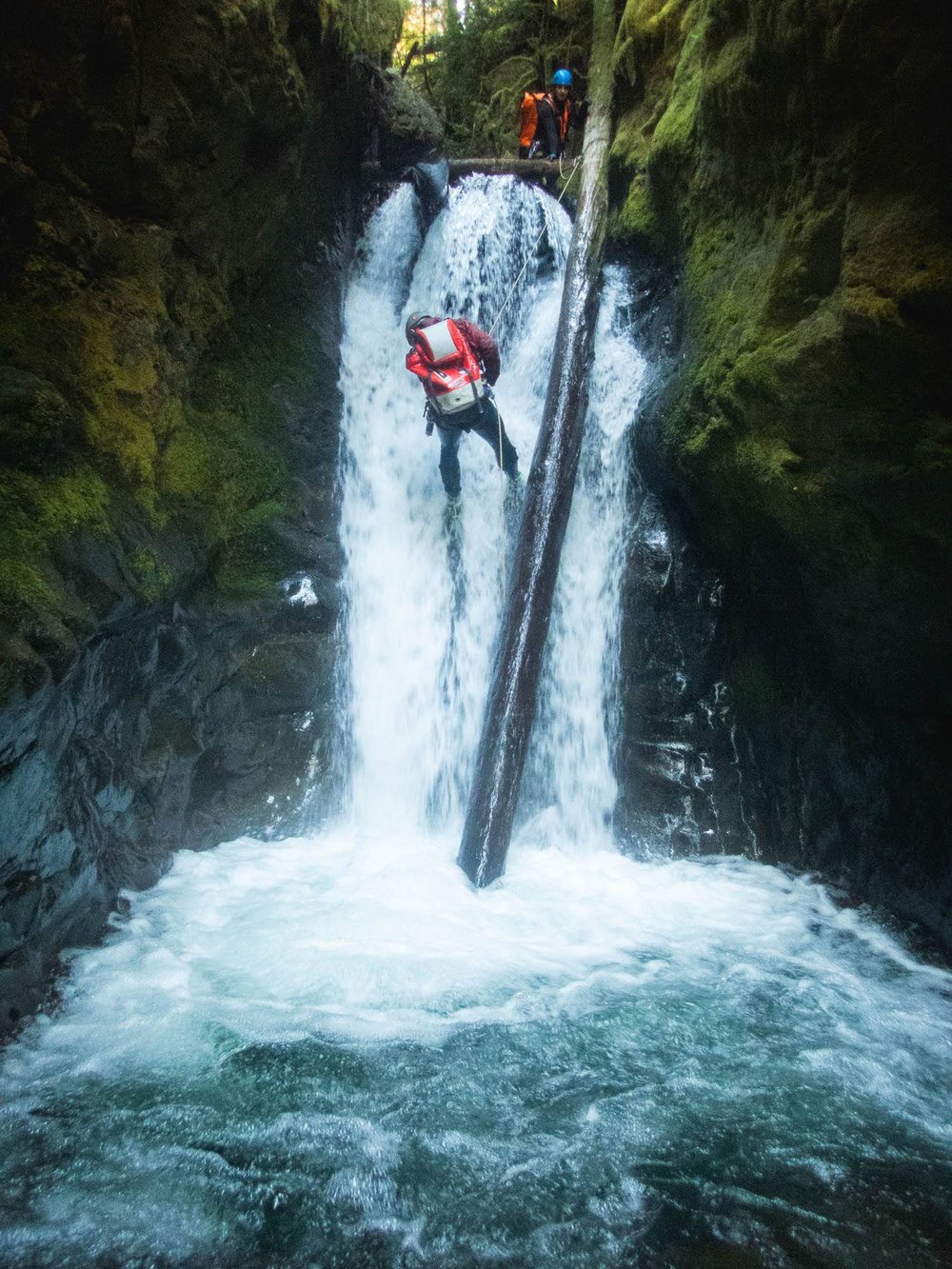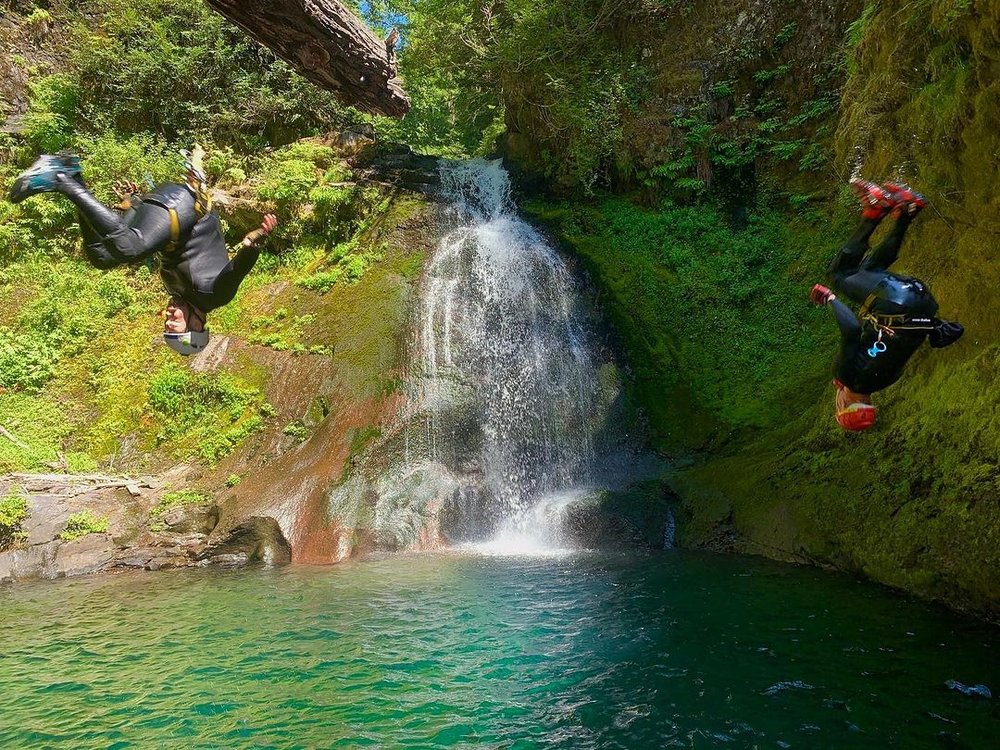Today, canyoneering is practiced all over the world, although it is most well known in Europe and the United States. In North America, its most commonly associated with the famous slot canyons of the Colorado Plateau, although it’s also practiced in the Rocky Mountains, the Sierra Nevada, Arizona, British Columbia, Mexico, Hawaii, and here in the Cascade Range. With one of the greatest concentrations of waterfalls in the world, canyoneering is a natural fit for the Pacific Northwest.
Like climbs, canyons can vary widely in level of difficulty: ranging from the easy hike-through variety to the extremely technical. Dry canyons are significantly easier in terms of rigging and preparation compared to those with flowing water. The more water that’s present, the more difficult the canyon becomes.
While there are many similarities between canyoneering and climbing, the two are unique sports with unique techniques and hazards. Experienced climbers may find their skills do not translate entirely to the canyon world; there’s a lot more to learn.
